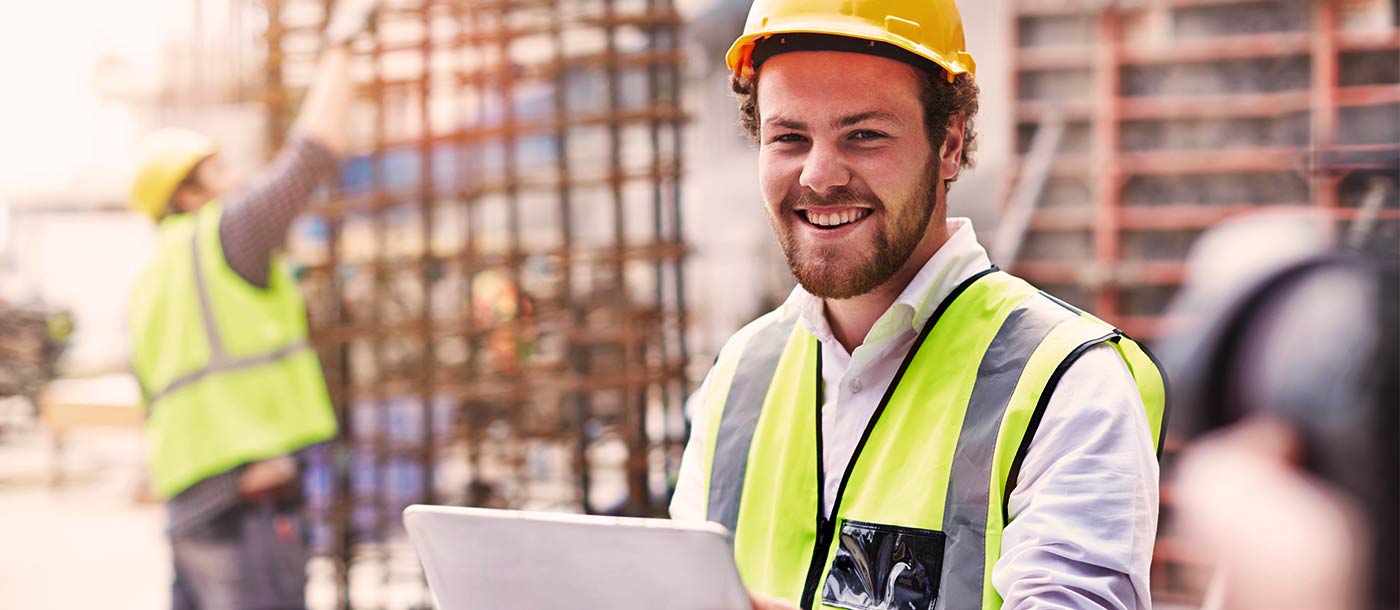
- Home > Blog > Small Business Trends > Looking Back: 5 Innovations In Construction in 2021
Looking Back: 5 Innovations In Construction in 2021
Technology is improving industries all around us by making jobs safer, more convenient, and more productive. The construction industry is no exception, and these advancements are proving to be worthy investments for businesses. From high-functioning robotics to new building materials, the world of construction is rapidly adapting to the explosive era of innovation.
Construction in 2021
Construction and similar contractors are up against all sorts of roadblocks that have been especially challenging for the last couple of years. Weather, cost of materials, hazardous work environments, and unpredictable project delays can make work slow and difficult. When you add a pandemic to the mix, construction companies have needed a COVID-19 construction strategy more than ever. That’s why these newer, safer technologies are leading the construction force to success and allowing them to continue driving operations around the world.
What were the construction industry trends of the year? What cutting-edge advancements are going to stick around? How can you capitalize on the right technology for your business? Check out these innovative construction technologies that were used in 2021 to find out.
5 Innovations In Construction
1. Augmented Reality
Augmented reality, or AR, is a technology that allows users to layer a digital reality on top of their real environment. In construction, this tool is being used more and more often, especially in helping workers visualize projects and anticipate concerns. Devices with AR capabilities make job sites even more accessible.
Some of the main uses include:
- More accurate project planning
- Streamlined collaboration between different parties
- Better training opportunities to improve safety
- Automated measurements
- Appealing and realistic project presentation and proposals
Some of the actual uses and current advancements of AR in 2021 include Mixed Reality, where professionals can interact with digital reality and actual reality. Remote work continued this year, which increased the need for AR collaboration. Plus, the equipment, both software and hardware, is continuing to improve.
With AR, companies can offer entire walkthroughs where the user is completely immersed in the digital world. AR also contributes to digital twins where a virtual simulator gathers important data to later inform actual structures. AR was active in 2021 and is predicted to continue advancing in the future.
2. Building Information Modeling (BIM)
Somewhat similar to AR, Building Information Modeling, commonly referred to as BIM, is also a technology that helps construction professionals visualize, engineer, and structure new building projects. This kind of software allows you to build and manage a digital version of a building asset. The software is advanced enough that it can process all kinds of data and adjust accordingly.
- Visualization: This tool is largely used for presenting, collaborating, and getting into the details of entire structures. 3D models like this help mitigate risk, predict failures, and track project progress throughout the entire timeline.
- Software: What makes the amazing visuals possible is of course the software that gathers data, helps calculate logistics, keeps different collaborators up-to-date as the model is updated, and more.
BIM in 2021 was definitely active and is projected to increase in the coming years. According to Autodesk, a BIM expert, different architects, engineers, and contractor companies are using BIM on over half of their projects, and it’s anticipated to increase significantly by 2024. From useful documentation to actual building measurements, BIM isn’t going anywhere for construction investments.
3. Robotics & Drones
Especially from the demanding economic and health challenges of 2021, construction professionals are using robotic technology and drones more often than before. These innovations make social distancing more realistic for companies, and because of the labor shortage, robotics was particularly important for this last year.
- Robotics: Some robotics and AI tools are being used to regularly analyze project progress, which even extends to generating reports, finding and anticipating errors, and providing other measurable data. Other robotics are more literal in that they can be programmed to actually do some of the labor, like installations, which make construction teams far more efficient.
- Drones: Drones have been gaining popularity because of the convenience and productivity they offer. From building inspections to project progress monitoring, drones are more a staple in 2021. Topographic maps, for example, make mapping for a project much easier, which is an essential step in construction.
Robotics and drones are still improving in their performance and capabilities, but in general, both of these technologies improve quality assurance and save contractors money in the long run.
4. 3D Printing
3D printing is another helpful tool for visualization, and eventually, in building actual structures. 3D printing is a method of creating actual objects in the physical world from a digital rendering.
3D printing construction benefits include:
- Saving on the labor and time of traditional construction methods
- Environment-friendly materials that produce less waste in their construction
- Faster production times with less human error
Though some actual housing structures have been built from 3D printing, there’s still further research that needs to go into 3D printing at scale. Still, in 2021, principles of 3D printing continued to be developed and slowly implemented. It’s not a completely independent construction solution, but it’s expected to expand in the coming years.
5. IoT & Analytics
Connectivity is a huge aspect of all industries, but undoubtedly important for technology-driven fields. The Internet of Things (IoT) is the way in which devices are able to connect with each other, monitor different tools and equipment, and gather data. Because of all the benefits of this tech, they have to run reliably, communicate with each other, and safely share and process data. This is important for construction, especially when parties like stakeholders are involved.
Ways that IoT is being used, including in the past year, include:
- Use sensors that monitor equipment and vehicle safety and performance. These sensors can also detect temperature, vibrations, steps, and much more.
- Gather data from IoT devices that can be transformed into monitorable and actionable analytics.
- Remotely monitor worker safety, health, and productivity.
- Optimize inventory to save both time and money.
- Keep projects flowing properly so that they can be completed correctly and on time.
IoT even influences the dress and other construction wearables since it can monitor every worker’s safety. This technology is used to benefit all of the other technology construction workers use, and was used in 2021 to support and drive remote work. Construction professionals should plan on using IoT for the rest of their careers.
What Does This Mean For Your Business?
Construction business owners need to understand that technology is skyrocketing, not at a linear pace, but an exponential one. Companies that are taking advantage of available innovations in the construction industry are creating a new standard of production and efficiency. Equipment like drones or IoT devices, or software such as BIM isn’t just trendy—they’ll be around moving forward and built upon for even better solutions.
Every year that passes, life-changing innovations are being pushed live, and new ones are queued up. Don’t get left behind—start investing in construction innovations with a small business loan. QuickBridge offers business owners solutions that help you grow your business and still protect your personal finances.
Your company can stay competitive in the field of construction with the right resources and innovations! We’re here to help you take the first step. Learn more about how QuickBridge supports your construction business plan by speaking with a specialist (888.233.9085).



